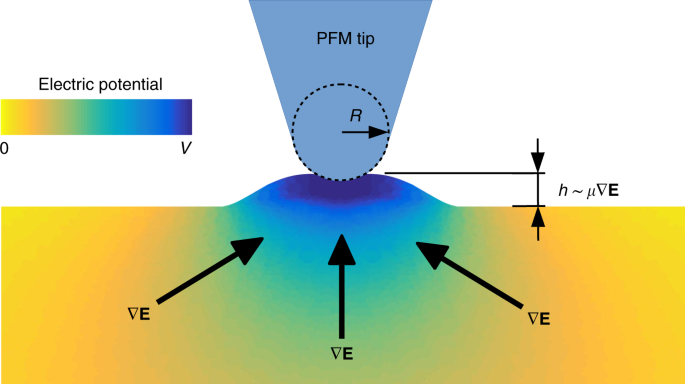This work presents a geometrically exact Kirchhoff-like electroelastic rod theory wherein the contribution of free space energy is also factored in. In addition to the usual mechanical variables such as the rod's centerline and cross-section orientation, three electric potential parameters are also introduced to account for the variation in electric potential within the rod's cross-section as well as along the rod length. The free space energy is included through an electric flux-like variable acting on the lateral surface of the rod. The governing equations of this rod are derived through balance of forces and moments (arising from both mechanical and electric sources) for mechanical variables, weighted integration of the three-dimensional electric displacement equation in the rod's cross-section for electric potential parameters and through the asymptotic expansion of a boundary integral equation for the electric flux variable. We also obtain the expressions of internal contact moment and conjugates of electric potential parameters in terms of the rod's aforementioned mechanical and electric variables. A specific choice of the three-dimensional electroelastic stored energy density is further taken catering to piezoelectic materials and dielectric elastomers and the rod's constitutive equations are rederived which exhibit interesting interplay between mechanical and electric variables. The presented work can help improve the design of soft electroelastic rod-like actuators and sensors.
The article will soon appear in IJSS which can also be accessed here: https://www.researchgate.net/publication/365476326_An_electroelastic_Kir...
I would like to share our recent work published in Nature Communications.

Converse flexoelectricity is a mechanical stress induced by an electric polarization gradient. It can appear in any material, irrespective of symmetry, whenever there is an inhomogeneous electric field distribution. This situation invariably happens in piezoresponse force microscopy (PFM), which is a technique whereby a voltage is delivered to the tip of an atomic force microscope in order to stimulate and probe piezoelectricity at the nanoscale. While PFM is the premier technique for studying ferroelectricity and piezoelectricity at the nanoscale, here we show, theoretically and experimentally, that large effective piezoelectric coefficients can be measured in non-piezoelectric dielectrics due to converse flexoelectricity.
Link:
https://www.nature.com/articles/s41467-019-09266-y?error=cookies_not_sup...
Looking for postdoctoral position. My current postdoc contract at National University of Singapore will be terminated in the end of August, 2016. I have quite good experience in the following areas during my PhD and current postdoc career.
Areas: Dielectric elastomer, Smart Polymer, Energy harvesting using EAPs, Soft Actuation, Hydrogels/conducting polymers, Polymer nanocomposites, Dielectric/Piezoelectric materials.
Dr. Suryakanta Nayak
Postdoctoral Research Fellow
Department of Mechanical Engineering
National University of Singapore, Singapore 117576
E-mail: suryakanta.iitkgp@gmail.com / mpesn@nus.edu.sg
Personal Webpage: http://suryakantanayak.weebly.com/
Kindly contact me if detailed CV is necessary. About my publication record, please see my personal webpage.
This work has been recently published in Nature Nanotechnology.

Flexoelectricity allows a dielectric material to polarize in response to a mechanical bending moment and, conversely, to bend in response to an electric field. Compared with piezoelectricity, flexoelectricity is a weak effect of little practical significance in bulk materials. However, the roles can be reversed at the nanoscale. Here, we demonstrate that flexoelectricity is a viable route to lead-free microelectromechanical and nanoelectromechanical systems. Specifically, we have fabricated a silicon-compatible thin-film cantilever actuator with a single flexoelectrically active layer of strontium titanate with a figure of merit (curvature divided by electric field) of 3.33 MV−1, comparable to that of state-of-the-art piezoelectric bimorph cantilevers.
Link:
http://www.nature.com/nnano/journal/vaop/ncurrent/full/nnano.2015.260.html
Cracks generate the largest strain gradients that any material can withstand. Flexoelectricity (coupling between strain gradient and polarization) must therefore play an important role in fracture physics. Here we use a self-consistent continuum model to evidence two consequences of flexoelectricity in fracture: the resistance to fracture increases as structural size decreases, and it becomes asymmetric with respect to the sign of polarization. The latter phenomenon manifests itself in a range of intermediate sizes where piezo- and flexoelectricity compete. In BaTiO3 at room temperature, this range spans from 0.1 to 50 nm, a typical thickness range for epitaxial ferroelectric thin films.
Link:
http://journals.aps.org/prb/abstract/10.1103/PhysRevB.92.094101
Flexoelectricity is a size-dependent electromechanical mechanism coupling polarization and strain gradient. It exists in a wide variety of materials, and is most noticeable for nanoscale objects, where strain gradients are higher. Simulations are important to understand flexoelectricity because experiments at very small scales are difficult, and analytical solutions are scarce. Here, we computationally evaluate the role of flexoelectricity in the electromechanical response of linear dielectric solids in two-dimensions. We deal with the higher-order coupled partial differential equations using smooth meshfree basis functions in a Galerkin method, which allows us to consider general geometries and boundary conditions. We focus on the most common setups to quantify the flexoelectric response, namely, bending of cantilever beams and compression of truncated pyramids, which are generally interpreted through approximate solutions. While these approximations capture the size-dependent flexoelectric electromechanical coupling, we show that they only provide order-of-magnitude estimates as compared with a solution fully accounting for the multidimensional nature of the problem. We discuss the flexoelectric mechanism behind the enhanced size-dependent elasticity in beam configurations. We show that this mechanism is also responsible for the actuation of beams under purely electrical loading, supporting the idea that a mechanical flexoelectric sensor also behaves as an actuator. The predicted actuation-induced curvature is in a good agreement with experimental results. The truncated pyramid configuration highlights the critical role of geometry and boundary conditions on the effective electromechanical response. Our results suggest that computer simulations can help understanding and quantifying the physical properties of flexoelectric devices.
Link to the paper:
http://scitation.aip.org/content/aip/journal/jap/116/9/10.1063/1.4893974